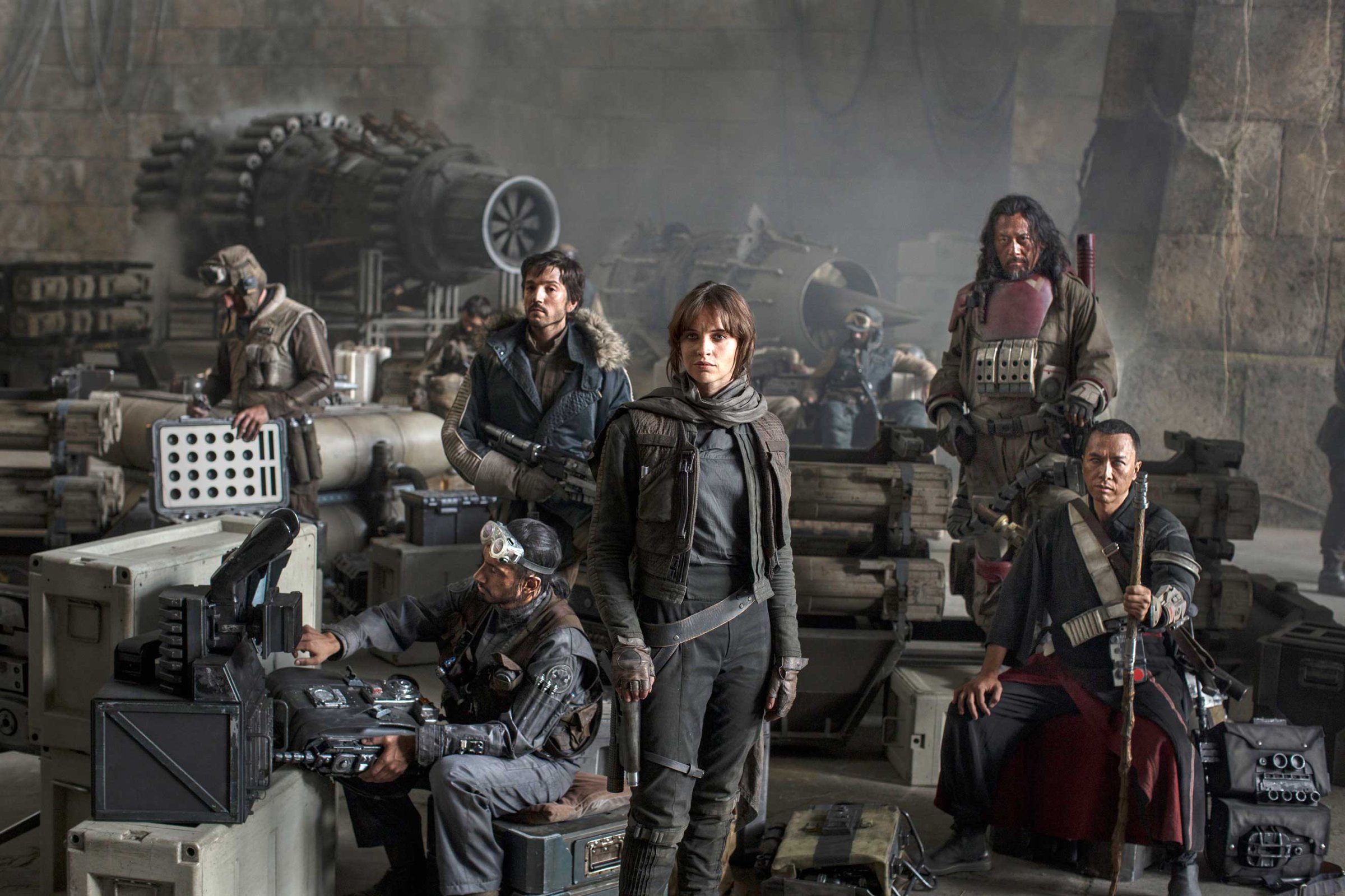
Disney knows nostalgia is a potent force, especially when it comes to the Force. Last year’s Star Wars: The Force Awakens became the third highest-grossing film of all time and kicked off a run of six new Star Wars movies that will hit theaters before 2020. This year’s entry, Rogue One (out Dec. 16), turns back the clock to just before the 1977 original, A New Hope. The new film tells the story of the ordinary Rebel spies who endeavor to steal the plans to the Death Star–the same plans that (39-year-old spoiler alert) eventually help Luke Skywalker destroy the ultimate weapon in a galaxy far, far away.
But in Star Wars‘ case, nostalgia is a tricky thing: in order to rewind, Disney is finding that it also has to rewrite for a contemporary, global audience. In retrospect, A New Hope lacks the racial and gender sensibilities of modern blockbusters. The film’s heroes were predominantly white and male. Women didn’t wield lightsabers until the prequels in the 2000s, and even then only minor female characters had the privilege. That leaves the studio trying to tap into a lucrative longing for yesteryear while creating a very different set of heroes.
So Rogue One returns to the original Star Wars era with a diverse, international cast. “In Star Wars, you’re not just talking about different nationalities. You’re talking about different species and creatures living in different galaxies,” says Mads Mikkelsen, who plays Galen Erso, a scientist who works for the Empire. “It would be really weird if everybody just came from America.” It’s admirable–now kids in all countries can pretend to destroy the Death Star. It’s also savvy business, given the primacy of the international box office.
Like The Force Awakens, which stars Daisy Ridley’s Rey, Rogue One stars a female protagonist, Jyn Erso, played by Oscar-nominated Felicity Jones. “It doesn’t feel at all radical to have both Rey and Jyn as heroes,” says Jones. “We want you to identify with Jyn as a person, not to objectify her but to empathize with her.” And as in The Force Awakens, the cast in Rogue One is a global one. The movie features Bodhi Rook (British-Pakistani actor Riz Ahmed), Captain Cassian Andor (Mexican actor Diego Luna), warrior Chirrut Imwe (Hong Kong actor Donnie Yen) and resistance fighter Saw Gerrera (African-American actor Forest Whitaker).
“I think that films like Star Wars have the great potential to let so many different people put themselves in someone else’s shoes, and there are so many different pairs to try on,” says Ahmed, who has spoken out about the limited types of roles offered to actors like him–often cab drivers and terrorists. “I made a decision not to play characters that were reinforcing stereotypes with two-dimensional portrayals. I hope the work that I’ve done forces the culture to stretch a bit.”
This is not exactly a new problem. Some franchises have run so long–Star Trek, James Bond, some superhero films–that they’ve been overtaken by a culture that makes even futuristic settings look dated, in terms of both character and theme. George Lucas said he created the original Star Wars in response to Nixon and the Vietnam War–a story of teenage rebellion to save democracy. The updated Rogue One, directed by Gareth Edwards, may function as a metaphor for a more global struggle. “I would say this film is a reaction to the world that we live in today,” says Luna. “The multiracial cast, the role of a woman in these stories, it’s all about how people of all different backgrounds need to join together to fight for good.”
More Must-Reads From TIME
- The 100 Most Influential People of 2024
- Coco Gauff Is Playing for Herself Now
- Scenes From Pro-Palestinian Encampments Across U.S. Universities
- 6 Compliments That Land Every Time
- If You're Dating Right Now , You're Brave: Column
- The AI That Could Heal a Divided Internet
- Fallout Is a Brilliant Model for the Future of Video Game Adaptations
- Want Weekly Recs on What to Watch, Read, and More? Sign Up for Worth Your Time
Write to Eliana Dockterman at eliana.dockterman@time.com